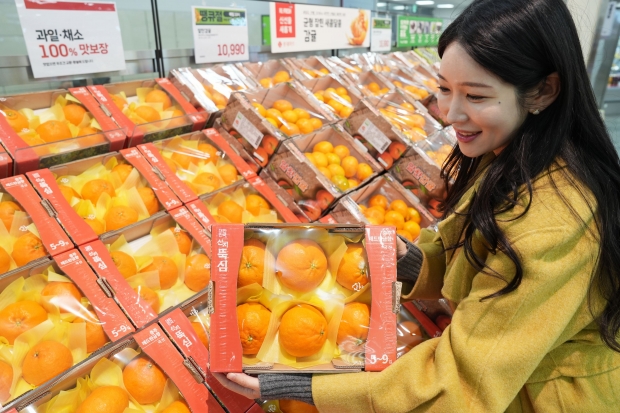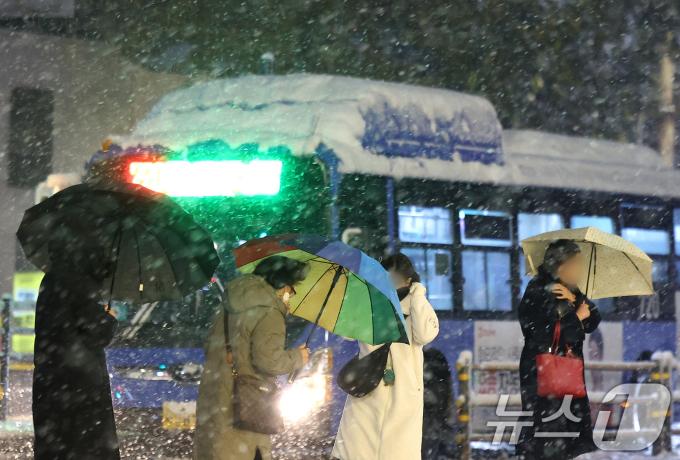
Lotte Mart/Supermarket is expanding citrus fruit operations in inland producing areas outside of Jeju Island, the main producing area.
This year, Jeju Island experienced abnormal weather with the average temperature and number of heat wave days from July to September hitting record highs.
As a result, shipments of tangerines/mandarins from Jeju Island have decreased significantly due to increased heat and damage.
Accordingly, the distribution industry is making efforts to secure alternative production areas in Jeju, taking note of the fact that fruit cultivation areas are moving north due to recent climate change and abnormally high temperatures.
In response to such climate change, Lotte Mart and Supermarket will sell ‘Chungju Red Tangeumhyang (1.5kg/box)’ grown in the inland region of North Chungcheong Province for 16,990 won on the 28th (Thursday).
This year, through an active production area diversification policy and pre-planning with the Chungju production area, the operating volume was increased by more than 60% compared to the previous year, securing a total volume of about 50 tons.
‘Tangeumhyang’ is an alternative crop grown in the Chungju region of North Chungcheong Province to respond to ongoing climate changes such as global warming, and is the first citrus variety successfully cultivated in the central inland region other than Jeju Island.
In addition, it is a type of Gampyeong (red tangerine) that is a cross between Hallabong and Cheonhyehyang. It is rich in juice and fragrance and has a crunchier texture than regular tangerines.
In addition, ‘Tangeumhyang’ is cultivated using the ‘Sumac’ cultivation method, which maintains a good temperature for citrus growth even in the cold inland climate compared to the Jeju production area, and boasts a high sugar content of more than 12 brix.
This is a cultivation method that takes advantage of the geographical characteristics of the mountainous region of Chungju, which has a lot of water. The greenhouse is made of a double structure, allowing underground bedrock water to flow into the inner house and wrapping it with a water film to maintain the temperature above zero even in the middle of winter.
In addition, due to the nature of ‘Tangeumhyang’ being cultivated in inland areas, the supply and distribution process is shorter than that of Jeju Island, so it can be shipped about a month earlier.
Accordingly, it is expected to be very popular with consumers as they can taste it first in November before the full-scale shipping period from Jeju Island begins.
Meanwhile, Lotte Mart and Supermarket officially launched ‘Yanggu Punchbowl Apple’ in January this year as the phenomenon of fruit producing regions moving north has accelerated recently.
Apples are a fruit that grows with optimal sugar content and texture when grown in cool environments with large daily temperature differences. Due to abnormally high temperatures, the cultivation area is gradually moving north from Gyeongsang-do, the existing main production area, to the inland mountains and Gangwon-do.
Accordingly, Lotte Mart/Supermarket quickly began test operation of ‘Yanggu Punchbowl Apple’ from the highland basin of Yanggu-gun and quickly sold out about 200 tons of the officially released quantity this year.
Lotte Mart and Supermarkets will continue to strive to discover high-quality products by diversifying production areas in line with climate change.
Seunghan Lee, MD (product planner) of Lotte Mart and Super Fruit Team, said, “We are actively responding to climate change by expanding the operation of Tangeumhyang in Chungju, an inland tangerine, by diversifying production areas in response to the northward migration of fruit cultivation, which is occurring across the Korean Peninsula.” , “We will continue to strive to discover products from various producing regions that can replace existing production volumes and to showcase fresh, high-quality fruits even in abnormal weather situations,” he said.

